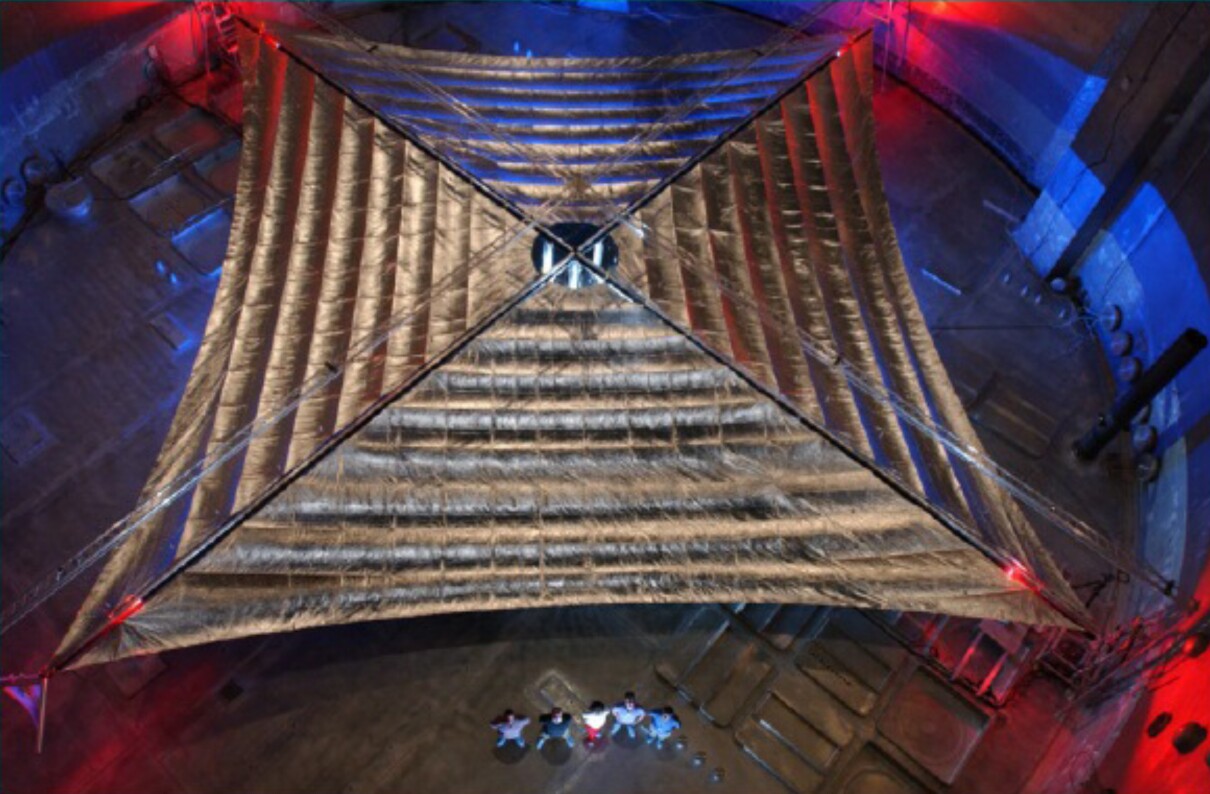NASA's upcoming Technology Demonstration Missions are intended to "transform its space communications, deep space navigation and in-space propulsion capabilities." Three project proposals have been selected for these missions, which should be launching in 2015 and 2016. One of those projects, the Laser Communications Relay Demonstration, we've told you about already. Another, however, will be demonstrating a mission-capable solar sail. While NASA has recently tested a solar sail measuring 100 square feet (9.29 square meters), this one will be the largest ever flown, spanning a whopping 15,543 square feet, or 1,444 square meters.
So, what would one do with a solar sail that big?
For one thing, it could be used to gather orbital debris over a period of several years - sort of like a drift net fishing trawler in space. It could also be included in a satellite's payload, and activated at the end of the spacecraft's mission. The sail, still attached to the satellite, could then be used to drag it out of its orbit.
Not unlike a sea anchor, it could also be used to hold satellites in unstable locations. As an example, it could allow GeoStorm solar flare-tracking satellites to be located at points three times farther from the earth than is currently possible - the push of the Sun's rays against the sail would balance the pull of the solar gravitational field on the satellite, ultimately resulting in the spacecraft staying put.
Finally, it could be used as a propulsion system for deep space travel.

The Solar Sail demonstration mission will include demos of the sail's attitude control, passive stability and trim control, along with a navigation sequence executed "with mission-capable accuracy." The project is being led by California's L'Garde Inc., in collaboration with the National Oceanic and Atmospheric Administration and NASA.
The solar sail itself should be ready in three years.
All images courtesy NASA





